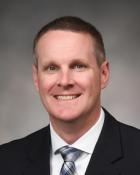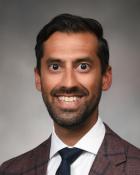Nasal, allergy, and sinus disorders
The Division of Rhinology & Anterior Skull Base Surgery providers focus their practice in rhinology (diseases of the nose and sinuses) and anterior skull base surgery. The group focuses on both the medical and surgical treatment of disorders of the nose and sinuses. The conditions treated range from simple issues, such as nasal obstruction, nasal drainage or nasal polyps, to more complex problems, such as tumors or lesions of the nose/sinuses, orbit or skull base.
Our patients have access to the newest procedures and technologies for treating conditions of the nose. These include in-office procedures as well as procedures performed in the operating room. Because UK HealthCare is a large academic medical center, our patients have access to a wide variety of disciplines, including allergists, pulmonologists, neurosurgeons, medical oncologists and radiation oncologists. Our goal is to provide high-quality, comprehensive care for any disorder affecting the nose or the sinuses.
Specialties
Referrals
To refer a patient, call UKMD’s at 800-888-5533 or use our online referral form.
About sinus surgery
Equipment
The nasal endoscope is a thin, rigid tube with a camera on one end. It lets the doctor see inside the nose and sinuses. It may be used in the clinic or in the operating room. In the clinic office, the ENT doctor may use it to find out the cause of your problem. It may be used along with a CT scan to reveal hard-to-see problems.
Nasal packing
After surgery, traditional nasal packing is not needed in most cases. To control bleeding, your surgeon may place a material that can be absorbed by your body. Recently, doctors have started placing stents that release steroids. Other times, no packing is needed.
Recovery
Sinus surgery is most often done as an outpatient procedure. Because the nasal endoscope lets the doctor open sinus passages without making any incisions on your face, patients often heal faster than expected after surgery. This lets you heal faster and improves outcomes. Most patients return to normal activity within a few days.


